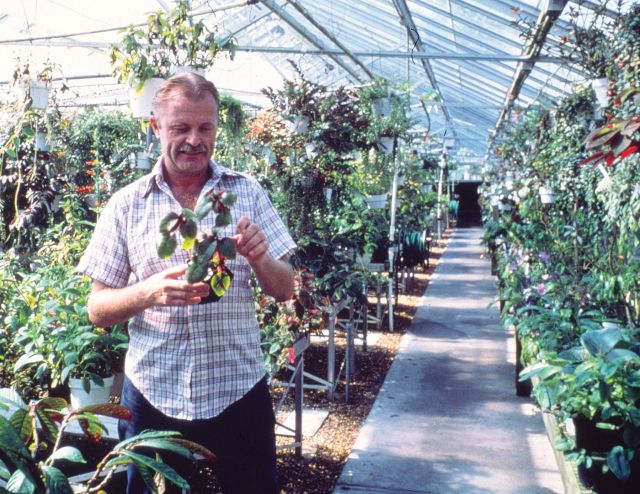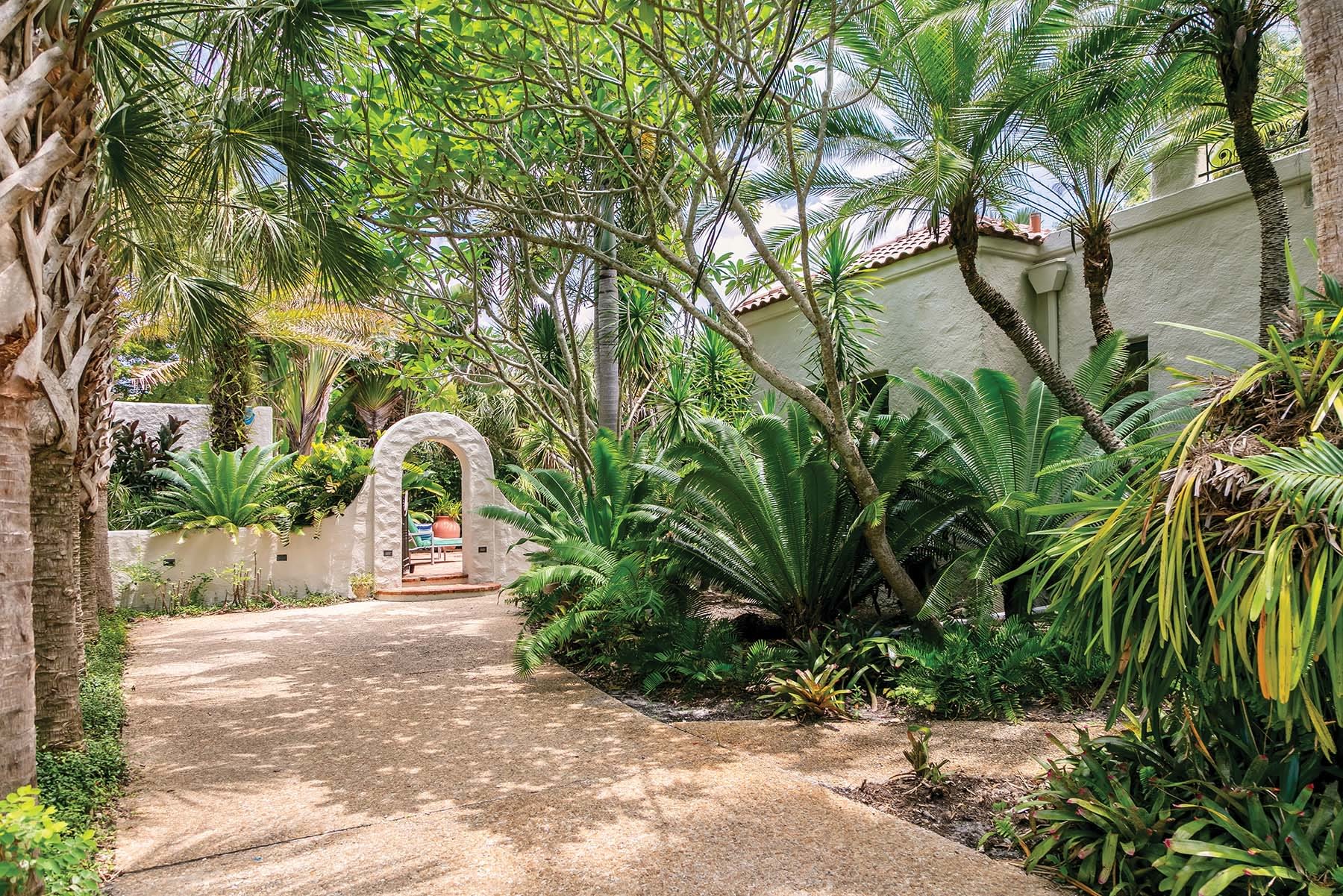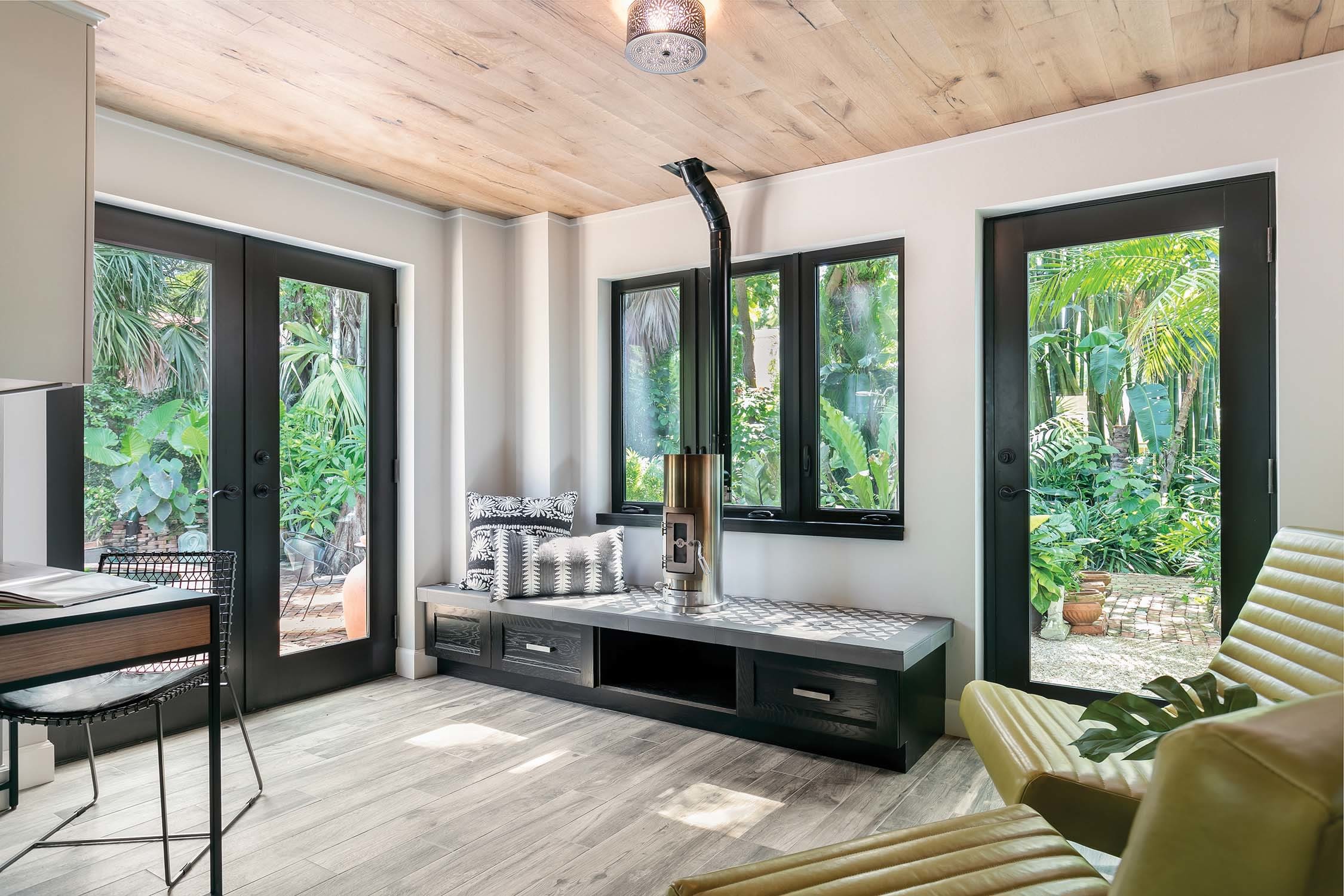A Laurel Park Bungalow Gets a Lush Modern Makeover
A stucco wall at the corner of Oak Street and Columbia Court reveals little about the 95-year-old bungalow behind it, or the rich tropical jungle that fills the near-acre corner lot in downtown Sarasota’s Laurel Park.
Once the decades-long home of Dr. Hans Wiehler, a botanist who worked at the Marie Selby Botanical Gardens in its early years and later founded the Gesneriad Research Foundation, the bungalow and its very private grounds have been made to bloom anew by Wiehler’s son, Danny, who inherited the property after his father passed away in 2003.
Space designer Martha Hafner of Martha Hafner Design, in collaboration with architect Leonardo Lunardi and Steve Milner of Sarasota Construction Services, worked within the existing shell to bring the cottage’s interior into the 21st century.
“The house was time-worn; it really needed work,” says Hafner, who, along with her husband, Paul, is an old family friend and neighbor of Danny Wiehler. Termites, original knob-and-tube wiring and a permeable stucco exterior that made air conditioning inefficient were among the old bungalow’s challenges that needed to be overcome.
With two bedrooms and two baths, it is not a large home, but it feels spacious because of the deft way Hafner opened up the main living spaces and used a consistent color scheme of handsome browns, grays and taupes in flooring, cabinet surfaces, tiles and paint colors. The interior is sparely decorated. “He’s a very simple guy,” Hafner says of the younger Wiehler. “Every time I added ornamentation, I had to fight him on it.”
The most striking change occurred when Hafner moved the original tiny kitchen, which had been tucked away in a rear entry alcove in the back, into the center of the great room, completely modernized it and expanded it mightily. That rear entry alcove now houses a small breakfast bar with marble tiles on one wall. Wiehler commissioned Ringling College of Art and Design grad Careth Christine Arnold to paint a moody, wall-sized mural of an enormous cypress tree at sunset on the opposite wall.
Outdoors, Danny Wiehler replaced the poly-pebble deck upon which the botanist’s greenhouse had stood with a lovely rectangular swimming pool surrounded by Chicago brick terraces that he laid himself. He built an accompanying koi fountain and circular terraces made of Chicago brick. And he has maintained the meandering paths, originally laid out by his father, which are flanked by giant oldhamaii bamboo, crotons, palms, majestic old oak with bromeliads in its branches, staghorn ferns, frangipani and bougainvillea—a fitting tribute to his late father’s life work.
Gesneriad Guru

Hans Wiehler at work in a Selby Gardens greenhouse in the late 1970s.
Image: Courtesy Photo
Hans Wiehler is not a household name, unless you happen to be a fan of gesneriads, that family of flowering plants whose best-known member is the African violet.
Wiehler came to Selby Gardens as a graduate student soon after the botanical gardens’ formation in the mid-1970s. (He earned his master’s in botany from Cornell and Ph.D. from the University of Miami). When he left Selby in 1983, he established the Gesneriad Research Foundation at his home on Oak Street, erecting a greenhouse where the pool now stands in the back yard and turning the small backyard guest house into his laboratory. There, visiting botanists and Gesneriad Research Foundation members attended symposia to learn more about the Gesneriaceae family, which consists of more than 3,400 species. And he led volunteers on plant-finding expeditions throughout Central and South America.
“He was kind of a guru,” says Selby Gardens’ vice president of botany Bruce Holst. “He made a very important contribution to the study of gesneriads; he published a lot, and a very steady group of people followed him.”
In 2002, Wiehler donated several thousand herbarium and liquid-preserved specimens to the Gardens. After his death a year later, Selby Gardens absorbed the rest of his collections. The Gesneriad Research Foundation evolved into the Sarasota Gesneriad Society, and all its members became Selby volunteers. “They are quite valuable for us,” says Holst.







